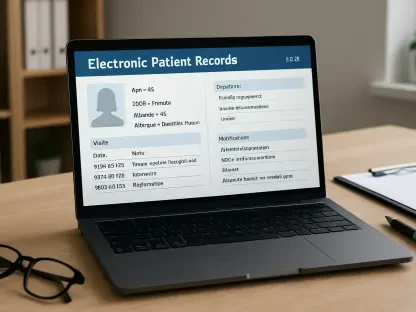In an era where technology is fundamentally transforming healthcare delivery, DocGo (NasdaDCGO) stands out as a dynamic force in the mobile health (mHealth) sector, poised to redefine access and efficiency. As the industry grapples with post-pandemic challenges and a growing demand for accessible care, this company is strategically positioning itself to address systemic gaps through innovative solutions and robust stakeholder engagement. With a sharp focus on underserved communities and technology-enabled services, DocGo is navigating a complex landscape of financial transitions and competitive pressures. The current year marks a critical juncture for the company, as it balances short-term operational hurdles with a vision for sustainable growth. From forging strategic partnerships to leveraging cutting-edge platforms, DocGo is laying the groundwork to become a catalyst for change in a field increasingly driven by preventive and value-based care models. This exploration delves into the multifaceted strategies propelling DocGo forward, highlighting its potential to disrupt traditional healthcare paradigms.
Building Trust Through Investor Engagement
DocGo’s commitment to transparency shines through its active participation in prominent investor conferences throughout the year. These platforms enable top executives, including CEO Lee Bienstock and CFO Norm Rosenberg, to engage directly with shareholders, offering detailed insights into the company’s financial health and strategic direction. By addressing investor concerns head-on and contextualizing temporary setbacks within a broader growth narrative, these interactions foster confidence. The emphasis on open communication not only enhances market visibility but also underscores DocGo’s dedication to aligning stakeholder expectations with its long-term objectives. This proactive approach serves as a cornerstone of the company’s efforts to maintain trust during periods of transition, ensuring that investors remain informed about both challenges and opportunities.
Beyond mere participation, these engagements are strategically timed to coincide with key operational updates, allowing DocGo to present a cohesive story of resilience and adaptability. The discussions often pivot to how short-term financial dips are part of a calculated shift toward more stable revenue streams, reassuring investors of the company’s foresight. This direct dialogue helps demystify complex restructuring efforts, painting a picture of a firm that is not just reacting to market changes but actively shaping its future. Moreover, by articulating a clear vision for expansion into underserved markets and niche services, DocGo positions itself as a thought leader in mHealth. Such interactions are vital for sustaining investor interest, especially in a sector where innovation and adaptability are paramount to success.
Financial Strategies for Stability
Despite encountering significant revenue declines in Q2 of the current year due to the phasing out of migrant-related programs, DocGo exhibits remarkable financial fortitude with substantial cash reserves amounting to $128.7 million. This strong liquidity position acts as a buffer, enabling the company to weather operational challenges while pivoting to more consistent income sources like payer-provider collaborations and public health contracts. Additionally, targeted cost-cutting initiatives, expected to save $10 million annually on administrative and general expenses, reflect a disciplined approach to fiscal management. These measures are not merely stopgaps but part of a broader strategy to ensure long-term stability in a volatile market, demonstrating DocGo’s ability to adapt under pressure.
The transition to diversified revenue models is a calculated move to mitigate risks associated with dependency on specific programs. By focusing on partnerships that align with value-based care trends, DocGo aims to establish a more predictable financial foundation over the coming years. The emphasis on reducing operational costs without compromising service quality further illustrates a pragmatic balance between efficiency and innovation. While current projections indicate an adjusted EBITDA loss, the underlying cash strength provides the flexibility to invest in growth opportunities. This financial resilience is critical as DocGo navigates a competitive landscape, ensuring it has the resources to scale operations and refine its offerings in response to evolving healthcare demands.
Innovating Care Delivery Models
Central to DocGo’s market strategy is its use of technology to address deep-rooted inefficiencies in traditional healthcare systems, particularly through integrated service models. The company combines remote patient monitoring, ambulance coordination, and care gap closure into a unified framework, supported by a sophisticated SaaS-based transportation management platform. This approach not only streamlines operations but also enhances patient outcomes by ensuring timely and accessible care. A notable focus on rural and underserved regions, exemplified by initiatives like the partnership with the New Mexico Department of Health for preventive care access, aligns with broader industry shifts toward equitable healthcare solutions. Such efforts position DocGo as a pioneer in delivering impactful services where they are needed most.
Further distinguishing itself, DocGo’s innovation extends to niche areas like medical transportation and compliance management, earning industry recognition for its groundbreaking contributions. By tailoring solutions to specific community needs, such as mobile vaccination programs in regions like San Diego County, the company addresses critical access barriers that larger competitors may overlook. This targeted strategy not only builds goodwill but also cements DocGo’s reputation as a responsive player in mHealth. The integration of technology with a human-centric focus ensures that services are both efficient and empathetic, meeting the dual demands of scalability and personalization. As healthcare continues to prioritize preventive measures, DocGo’s forward-thinking model offers a blueprint for sustainable impact across diverse demographics.
Competitive Challenges and Investor Outlook
In a sector crowded with established giants like Amwell and Teladoc, DocGo must navigate intense competition while carving out a distinct identity through specialized services. The challenge lies in maintaining innovation in areas like medical transportation while managing risks tied to fluctuating municipal contracts and market dynamics. Larger competitors often benefit from broader portfolios and deeper resources, placing pressure on DocGo to continuously refine its offerings. However, the company’s agility and focus on niche markets provide a competitive edge, allowing it to address specific pain points that broader players might neglect. Balancing these strengths against external pressures remains a critical task for sustaining growth in a rapidly evolving field.
For investors, DocGo represents a compelling yet complex opportunity, characterized by high risk and potential high reward. Current financial guidance suggests a transitional phase with projected revenue between $300 and $330 million alongside an anticipated EBITDA loss. Yet, the long-term upside hinges on effective cost management, successful contract execution, and geographic expansion. The speculative nature of this investment requires careful consideration of short-term volatility against the promise of market differentiation. Investors eyeing DocGo must weigh its strategic pivots and operational adaptability as indicators of future success, recognizing that persistence in niche innovation could yield significant returns if challenges are navigated adeptly.
Paving the Way for Future Impact
Reflecting on DocGo’s journey, the strides made in enhancing investor trust through transparent communication stand as a foundation for enduring confidence amid financial ebbs and flows. The robust cash reserves and cost-saving measures implemented provide a critical safety net, allowing a strategic shift toward sustainable revenue models. Innovations in care delivery, particularly for underserved populations, highlight a commitment to societal good while positioning the company as a disruptor in mHealth. Competitive hurdles are met with a focus on niche expertise, offering a unique value proposition. Moving forward, the emphasis should be on accelerating partnerships that bolster access to care, refining technological integrations for broader reach, and maintaining fiscal discipline to turn projections into profitability. These actionable steps, grounded in the lessons of recent efforts, can solidify DocGo’s role as a transformative force in healthcare over the years ahead.









